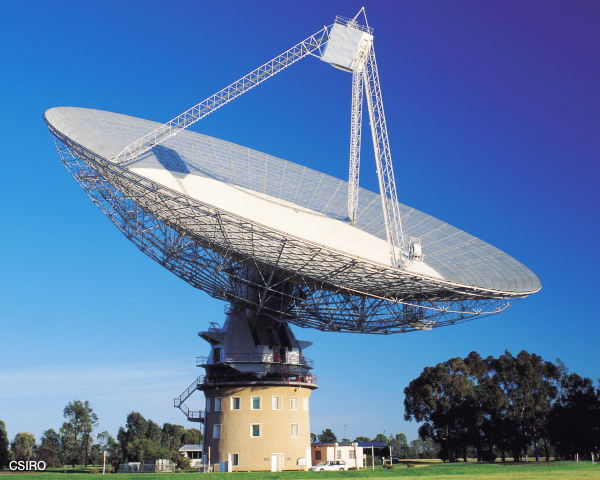Radio Telescope

Radio waves and gamma rays occupy opposite ends of the electromagnetic spectrum, yet observations using these radically different forms of light are deeply complementary. This constellation symbolizes all of the radio observatories working to support the Fermi mission, including the Australia Telescope National Facility, the Nançay Radio Astronomy Facility in France, the Arecibo Observatory in Puerto Rico, the Owens Valley Radio Observatory in California and many more.
Pulsars and blazars represent two object classes where radio observations are important for Fermi science. Pulsars are rapidly rotating neutron stars that emit pulses of light over a wide range of energies. Sometimes Fermi's Large Area Telescope (LAT) detects a source scientists suspect is a new pulsar, but there isn't enough data to reveal gamma ray pulses without better knowledge of its spin. Radio observatories can target these sources and search for radio pulses. Once found, the pulsar nature of the object is confirmed and its rotation is known, allowing scientists to identify pulses in gamma rays. Combining the radio and gamma-ray data enables a better understanding of how the rotational energy of the star is converted into light.
Blazars are active galaxies powered by supermassive black holes. They are especially bright to Fermi because they launch high-energy jets of subatomic particles whose interactions produce gamma rays, and the jets happen to point almost exactly in our direction. These jets occasionally undergo spectacular gamma-ray flares, but no one can predict when this will happen.
The LAT maps the entire sky every three hours and can catch the start of new flares quickly. Once a flare erupts, radio, optical and X-ray observatories can target the blazar to capture as much data over as wide a range of energies as possible. In addition, some radio and optical observatories regularly monitor blazars. This information helps astronomers better understand the complex magnetic fields in blazar jets and explore how the activity corresponds to gamma-ray emission detected by Fermi.
Explore further:
- NASA's Fermi Telescope Helps Link Cosmic Neutrino to Blazar Blast
- NASA's Fermi Mission Finds Hints of Gamma-ray Cycle in an Active Galaxy
- Fermi Maps an Active Galaxy's 'Smokestack Plumes'
- Radio Telescopes Capture Best-Ever Snapshot of Black Hole Jets
- Australia Telescope National Facility
- Nançay Radio Astronomy Facility
- Arecibo Observatory
- Owens Valley Radio Observatory
- Imagine the Universe: Neutron Stars and Pulsars
- Imagine the Universe: Active Galaxies and Quasars
- NASA's Fermi Gamma-ray Space Telescope Mission